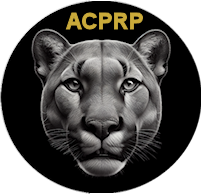
American Cougar Panther
Restoration Project
American Cougar Panther
Restoration Project
Our Blog
Social-ecological drivers of metropolitan residents’ comfort living with wildlife
Introduction: Human-wildlife coexistence in cities depends on how residents perceive and interact with wildlife in their neighborhoods. An individual’s attitudes toward and responses to wildlife are primarily shaped by their subjective cognitive judgments, including multi-faceted environmental values and perceptions of risks or safety. However, experiences with wildlife could also positively or negatively affect an individual’s environmental attitudes, including their comfort living near wildlife. Previous work on human-wildlife coexistence has commonly focused on rural environments and on conflicts with individual problem species, while positive interactions with diverse wildlife communities have been understudied. READ MORE
ENVIRONMENTAL STRESS AND IMMUNE COMPETENCE
In order to function adequately, the immune system is dependent on numerous regulatory interactions between organs, in a complex set of hormone and neuropeptide connections involving the nervous and endocrine systems. When an organism is faced with a stressor—broadly defined as ‘any aversive condition, be it a predator or an aggressive conspecific, disturbance to established social hierarchies, overcrowding, an infective parasite or foreign peptide or thermal extremes’ (Husband & Bryden 1996) that would affect fitness if not avoided or successfully tolerated (Martin 2009)—various body systems act together to activate and coordinate responses. This cascade of events involves synergistic, agonistic or antagonistic interactions between the sympathetic adrenomedullary system, the hypothalamic–pituitary–adrenocortical axis and the hypothalamic–pituitary–gonadal axis (Lawrence & Kim 2000). Although such stress responses are essential to survival, inadequate, excessive or unremitting adrenocortical and autonomic function is detrimental for reproduction and survival and can have dramatic effects on immunocompetence (Leonard 2006), thereby increasing susceptibility and vulnerability to disease (Friedman & Lawrence 2002). READ MORE
Welcoming Back Pumas to the Eastern United States residents’ comfort living with wildlife
Scientists have identified seventeen relatively large and undeveloped areas in the eastern United States where Puma concolor could recolonize to form self-sustaining populations. The habitat exists, human and livestock densities are low so as to minimize conflicts, and public support is off the charts. The big question is if there is the political will to welcome back the big cats. READ MORE
Cougars Could Lower Deer-Vehicle Crashes. How Many Deer Are Killed Each Year – A Heart-Breaking Situation for These Beautiful Creatures
Americans and Canadians share seven deer species and sub-species that roam the land from the east to the west coast. Some people believe wild deer are a beautiful part of nature, while others see the deer population as a fun sport and hunt.
Since deer move, some experts predict 1.5 million accidents yearly. Other sources suggest that deer collision statistics are much higher.
A popular car magazine points out that the seasonal clock change also impacts deer-vehicle collisions. The magazine’s source pegs deer accidents even higher at 2.1 million with a 10 billion dollar price tag and nearly 60,000 injuries.
On average, 440 people die. There were over 1.8 million animal collision insurance claims in the U.S. in one year, and State Farm reported 1,288,714 deer collisions. On top of deer-vehicle accidents, deer hunters kill at least 6.3 million white-tailed deer yearly. READ MORE
Socioeconomic Benefits of Large Carnivore Recolonization Through Reduced Wildlife-Vehicle Collisions
The decline of top carnivores has released large herbivore populations around the world, incurring socioeconomic costs such as increased animal–vehicle collisions. Attempts to control overabundant deer in the Eastern United States have largely failed, and deer–vehicle collisions (DVCs) continue to rise at alarming rates. We present the first valuation of an ecosystem service provided by large carnivore recolonization, using DVC reduction by cougars as a case study. Our coupled deer population models and socioeconomic valuations revealed that cougars could reduce deer densities and DVCs by 22% in the Eastern United States, preventing 21,400 human injuries, 155 fatalities, and $2.13 billion in avoided costs within 30 years of establishment. Recently established cougars in South Dakota prevent $1.1 million in collision costs annually. Large carnivore restoration could provide valuable ecosystem services through such socio-ecological cascades, and these benefits could offset the societal costs of coexistence. READ MORE
Potential cougar habitats and dispersal corridors in Eastern North America
Cougars (Puma concolor) have been recolonizing Midwestern North America during the past 3 decades with>950 cougar confrmations east of established populations. Due to an increase in confrmations east of current breeding populations, evaluation of cougar habitat suitability and connectivity is needed. However, few studies have assessed the habitat potential for cougar recolonization in the eastern portion of their former range.
Objectives We used various habitat quality thresholds to model potential cougar habitats and dispersal corridors throughout eastern North America. READ MORE
Florida Panther Breeding Area Expands in Partnership with Citrus Producer, G Road Grove LLC
READ ARTICLE
Florida Panther Recovery Plan
READ ARTICLE
White Oak Conservation
VISIT SITE
Florida Panther: Past, Present, and Future: WEC357/UW402, 2/2015
READ ARTICLE
Copyright © 2024 acprp.org 501c Approved 03/2024 (N24000004537) 99-2513577